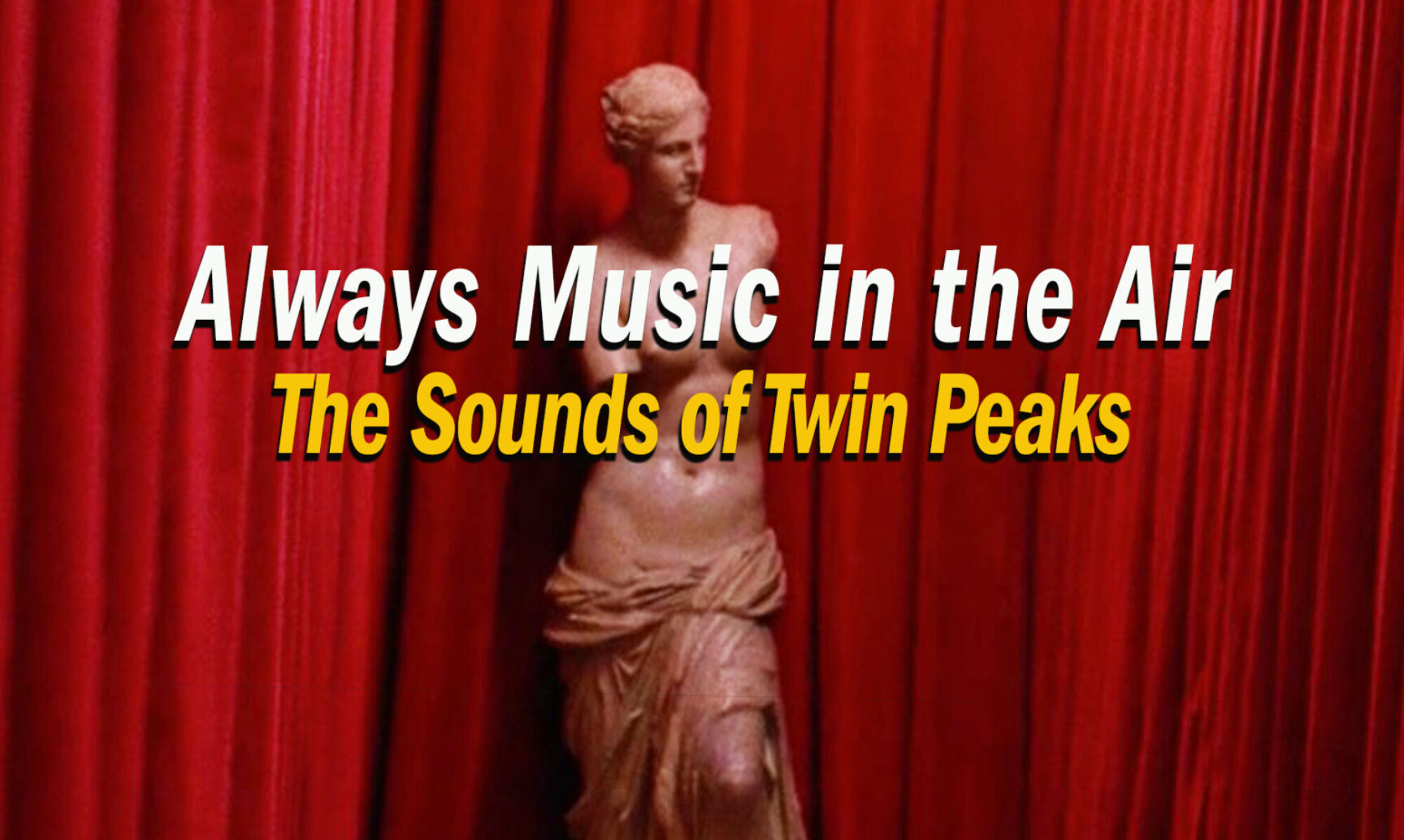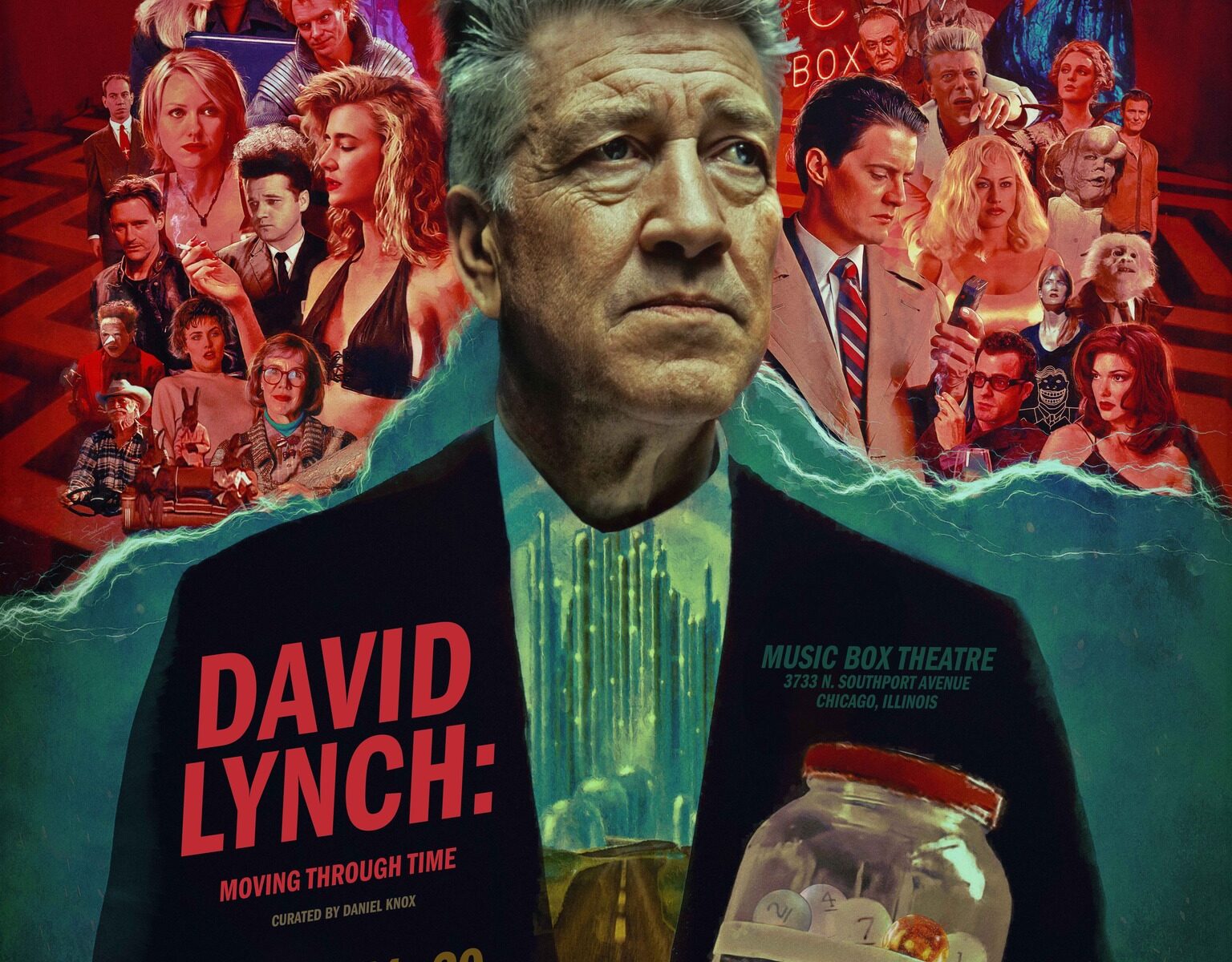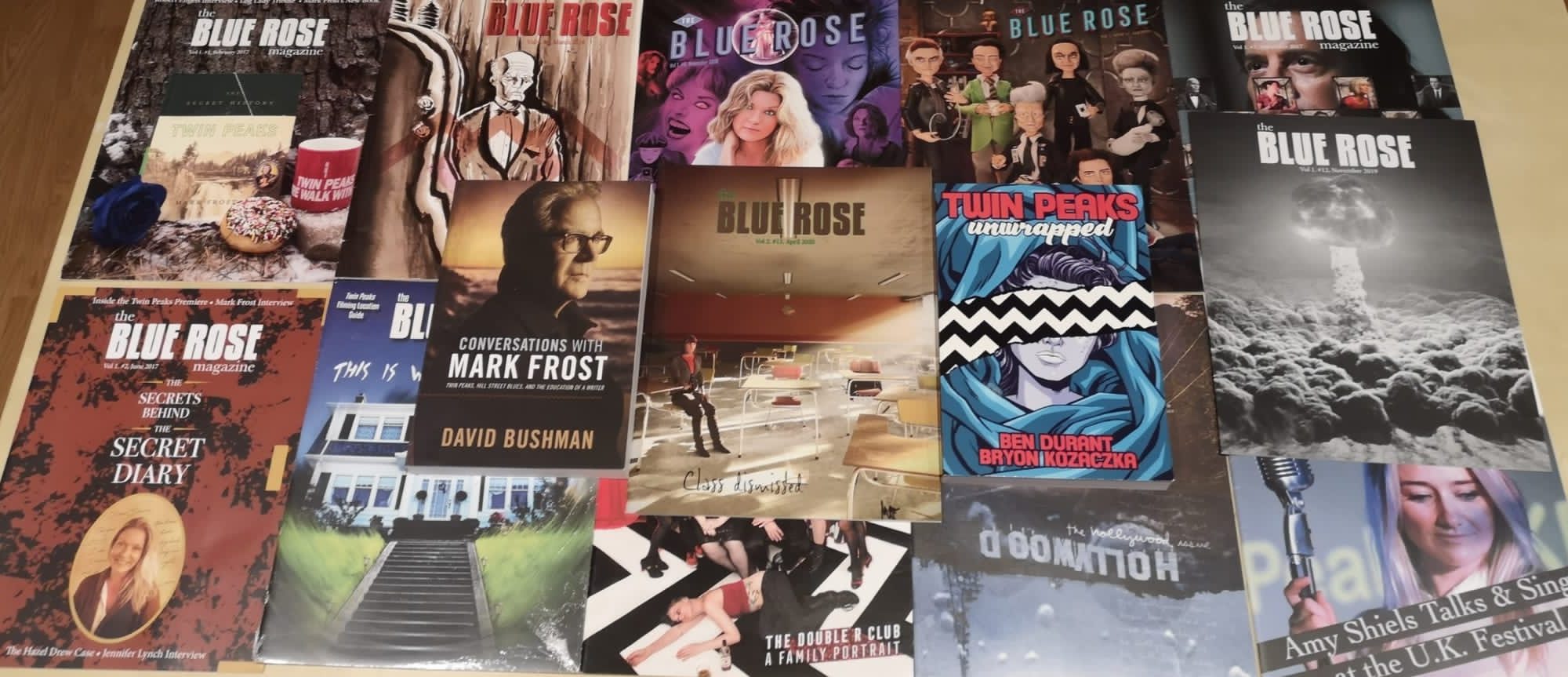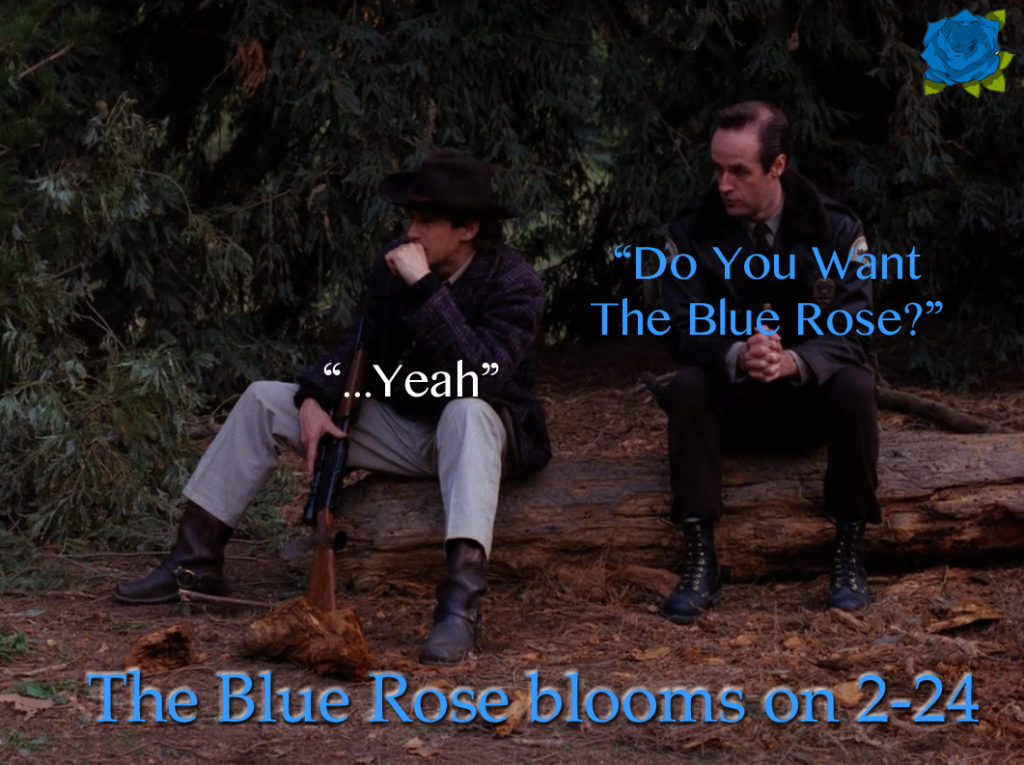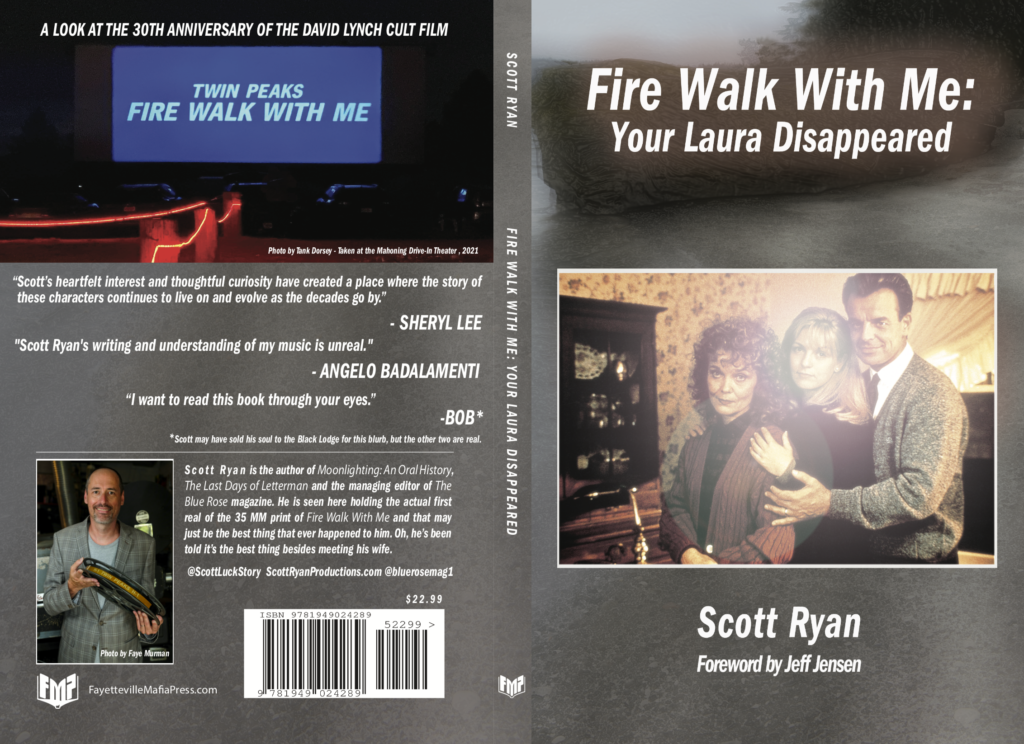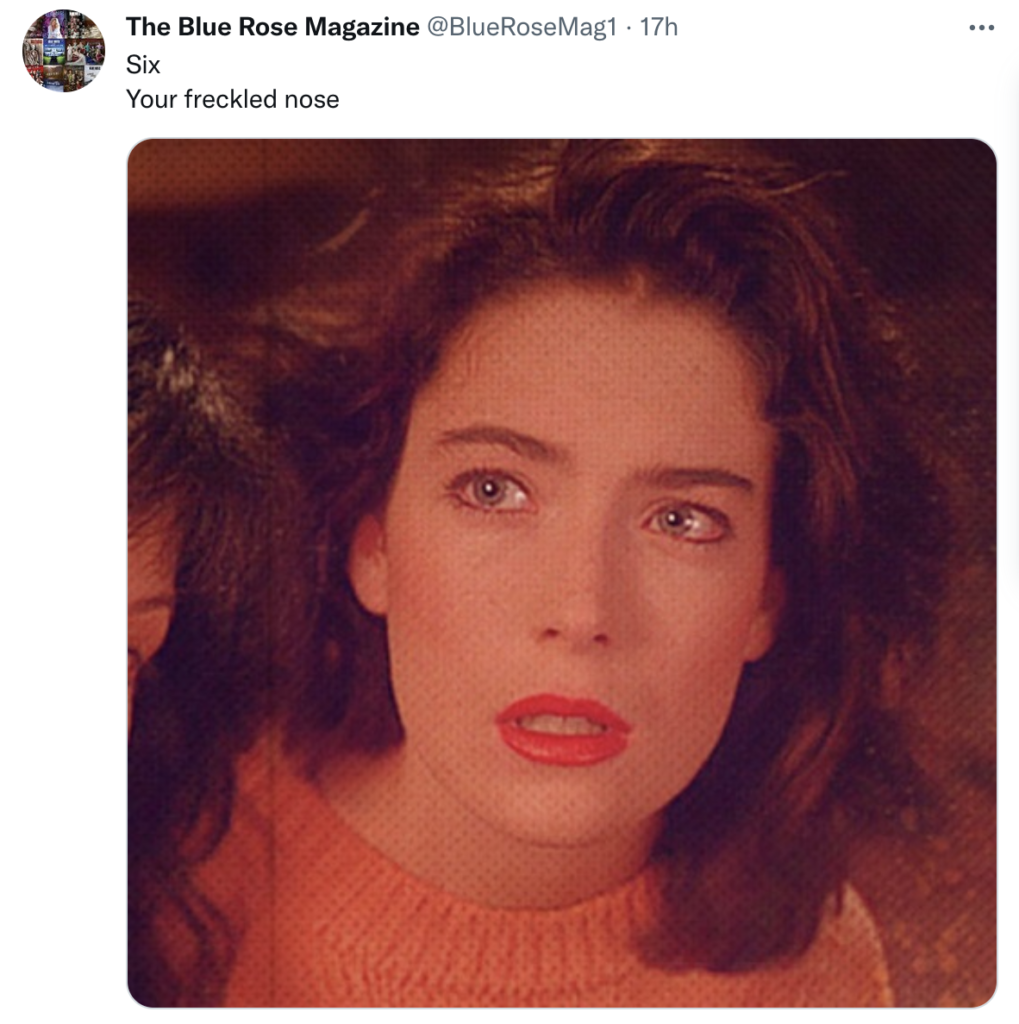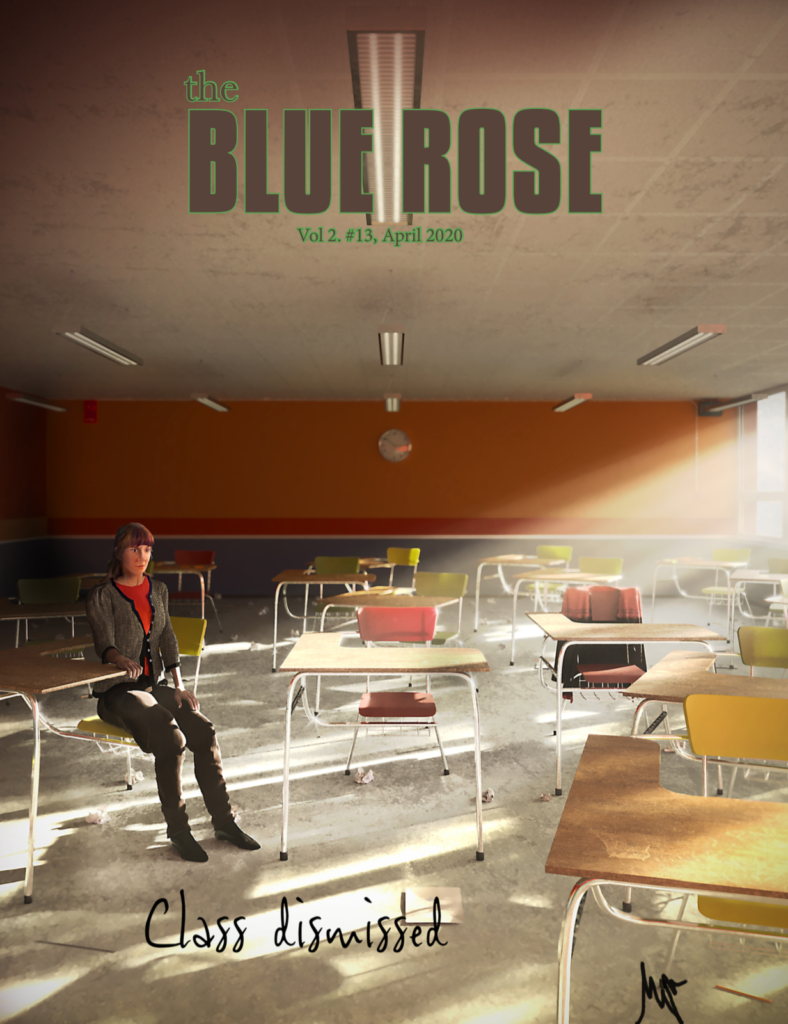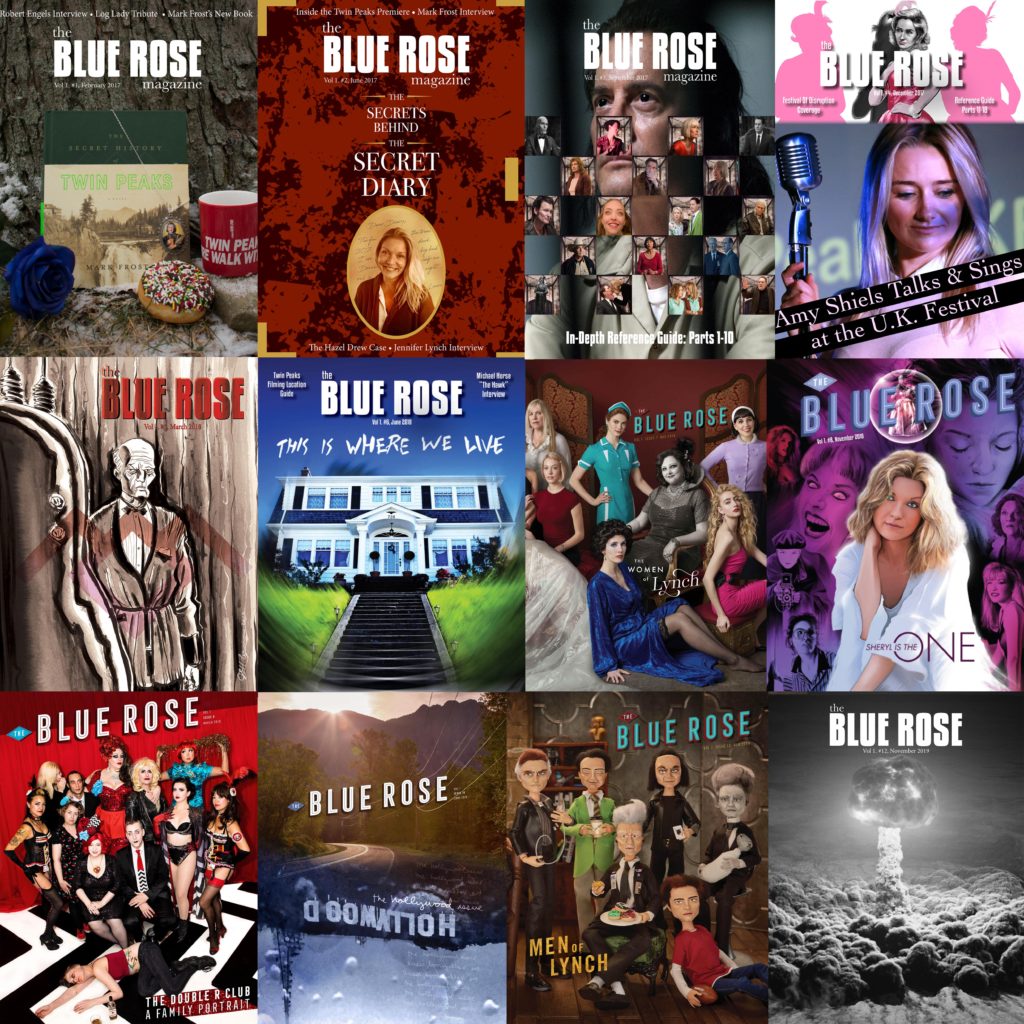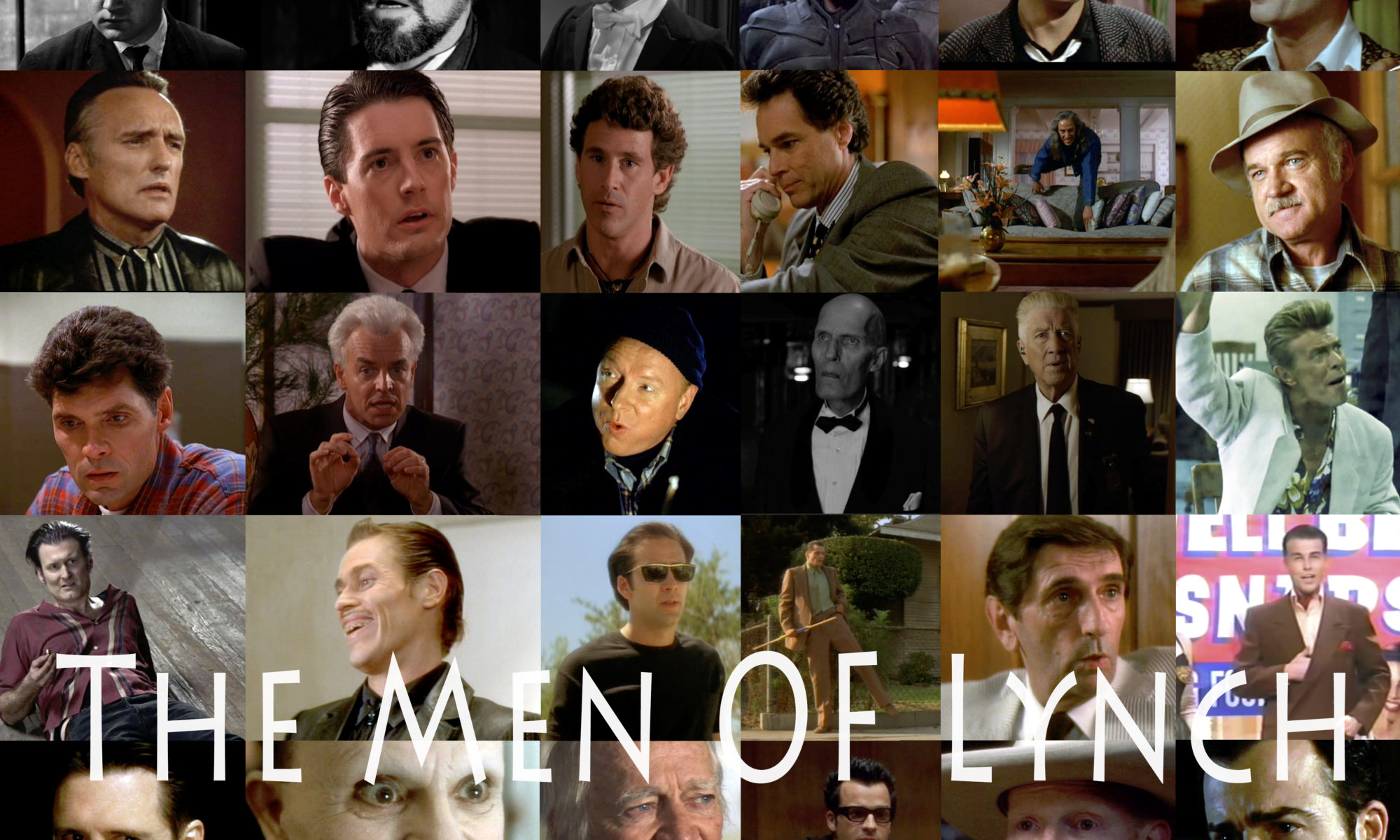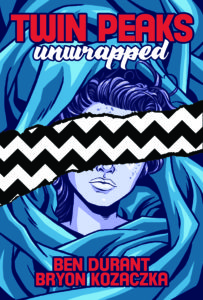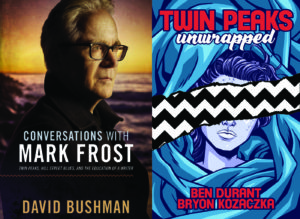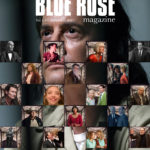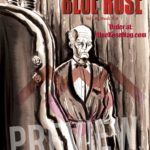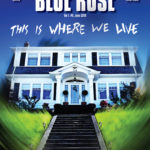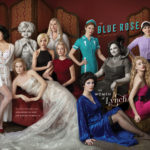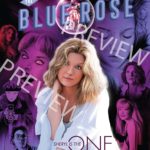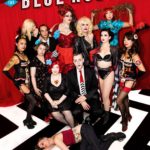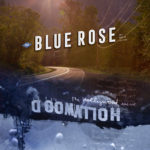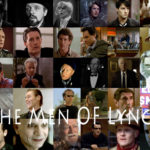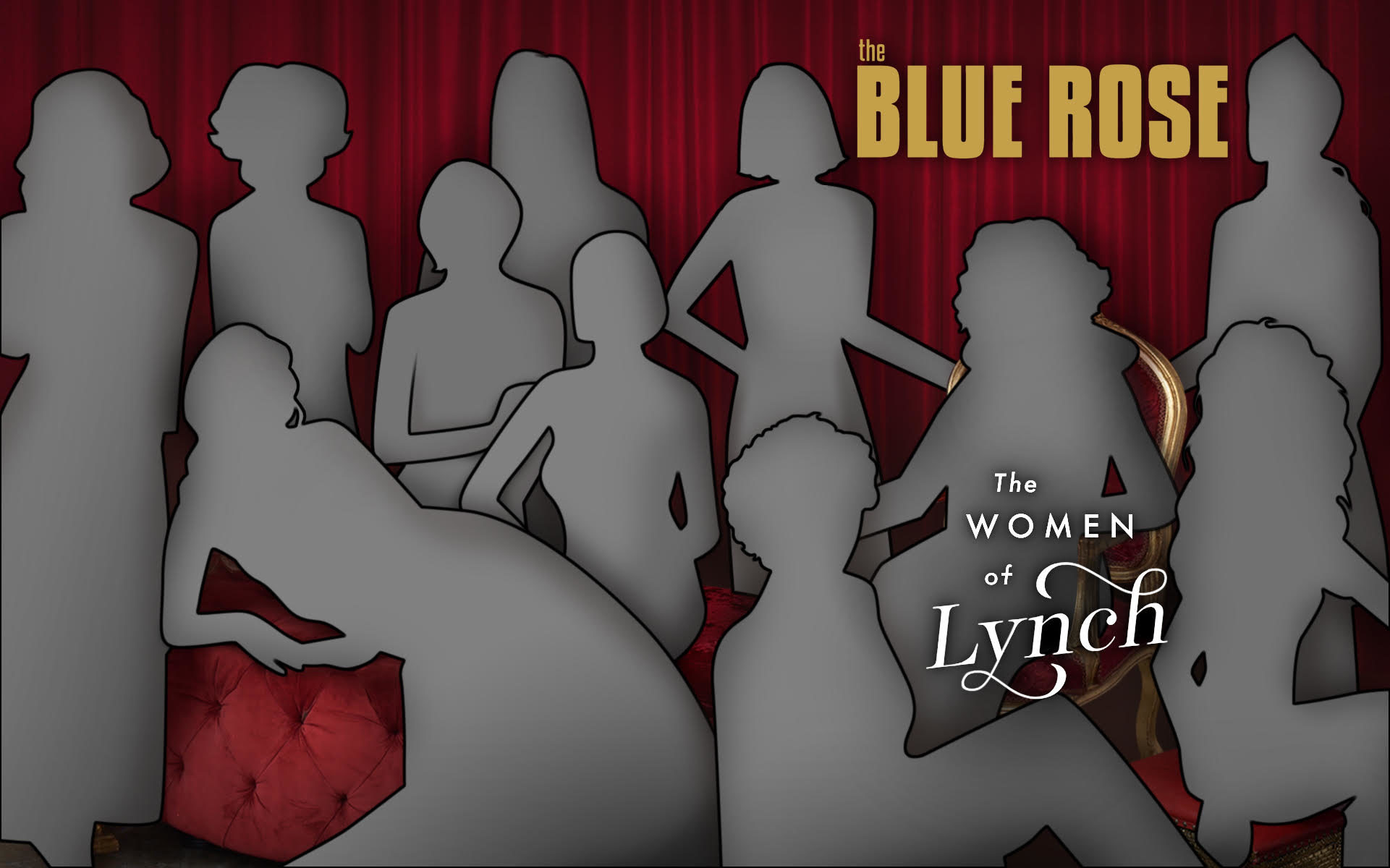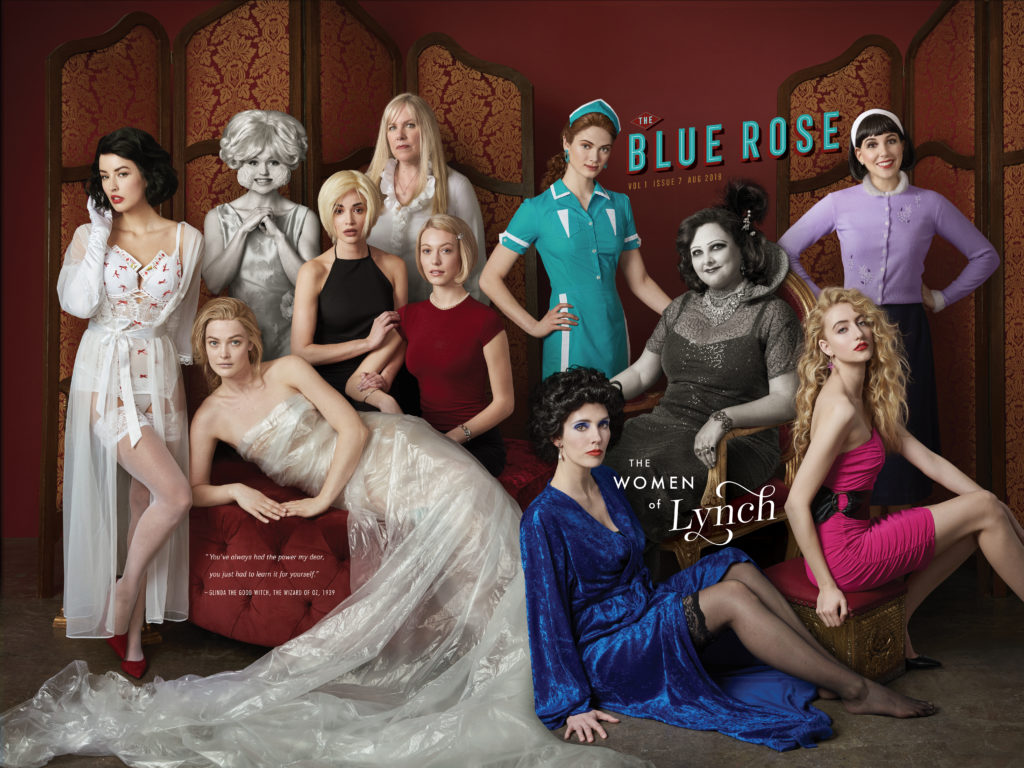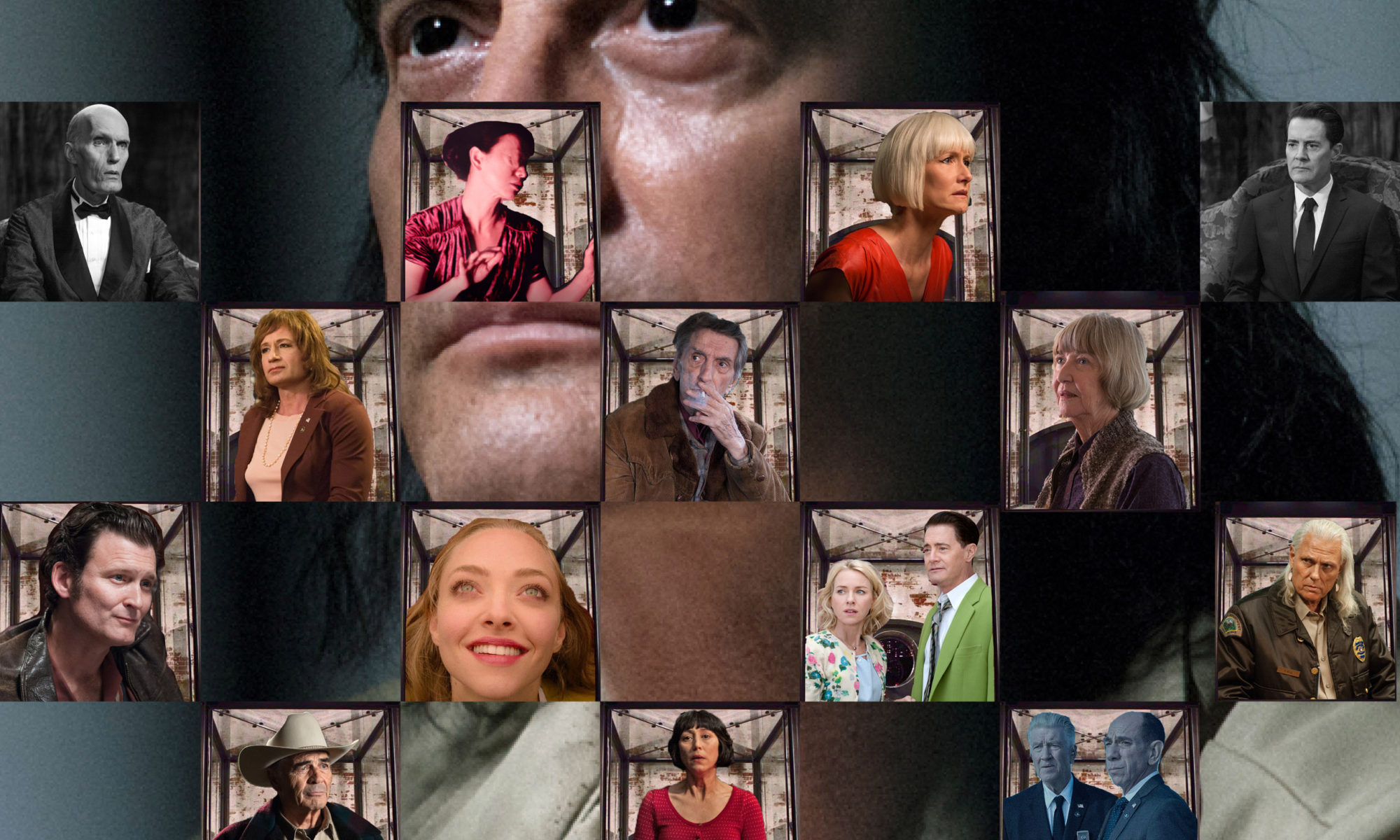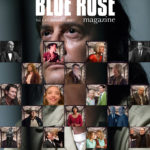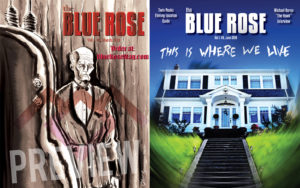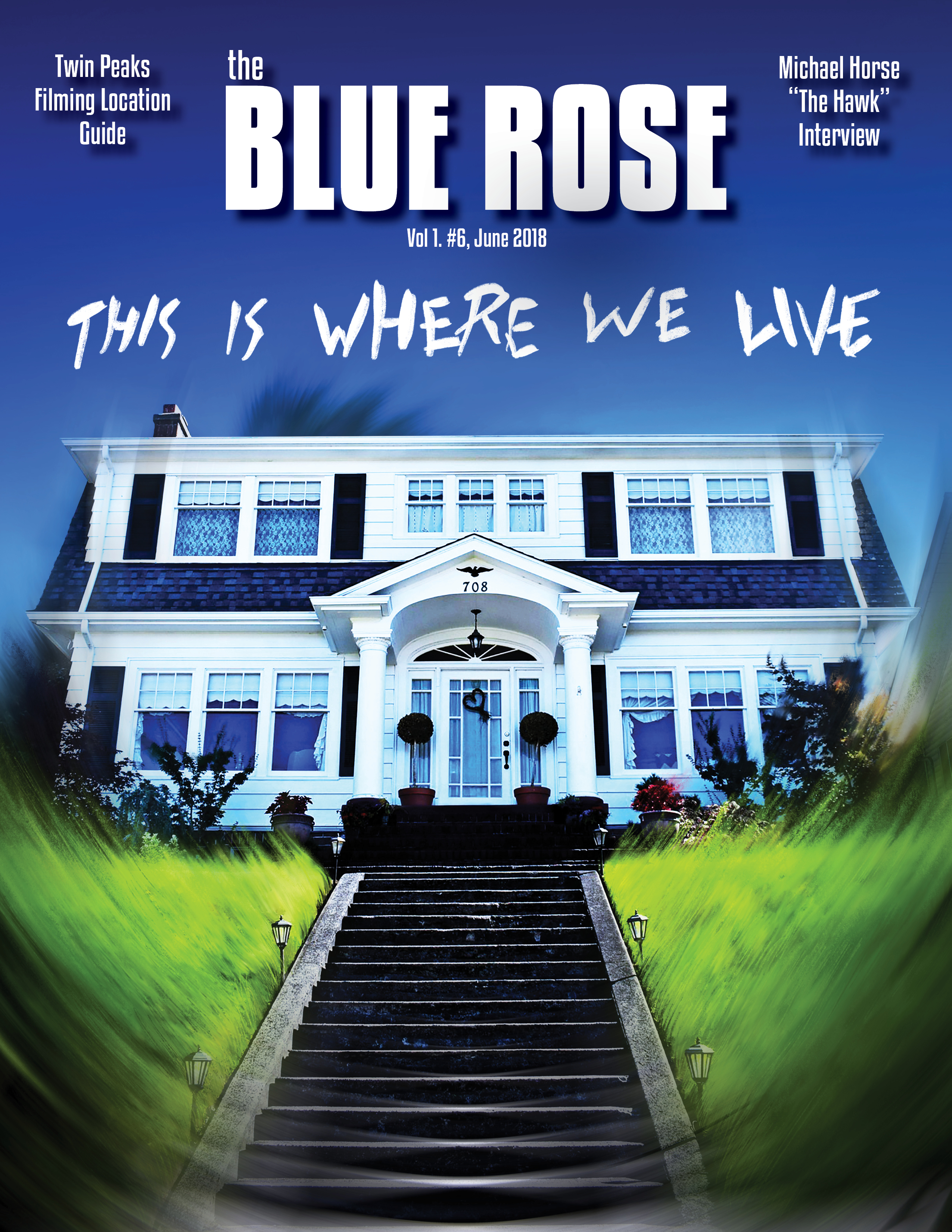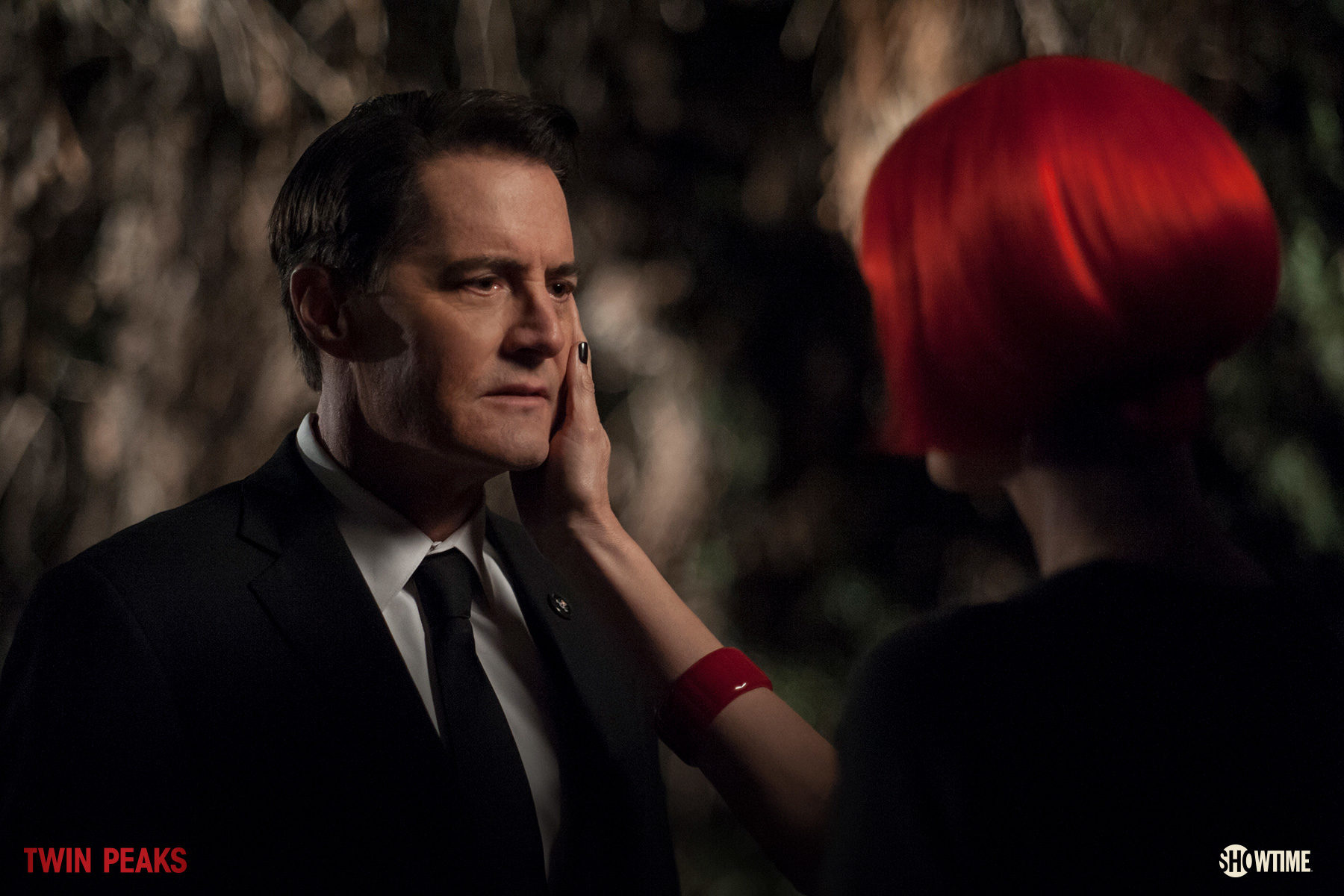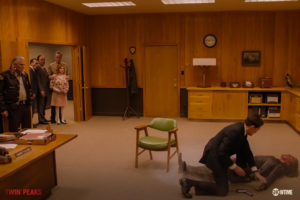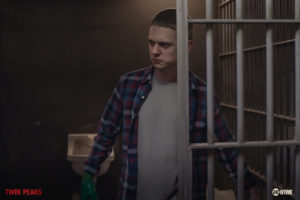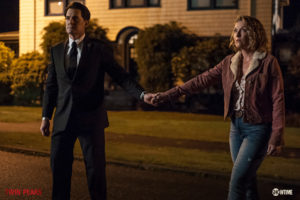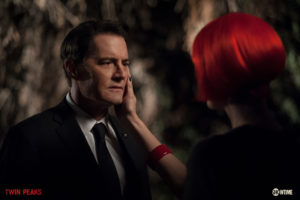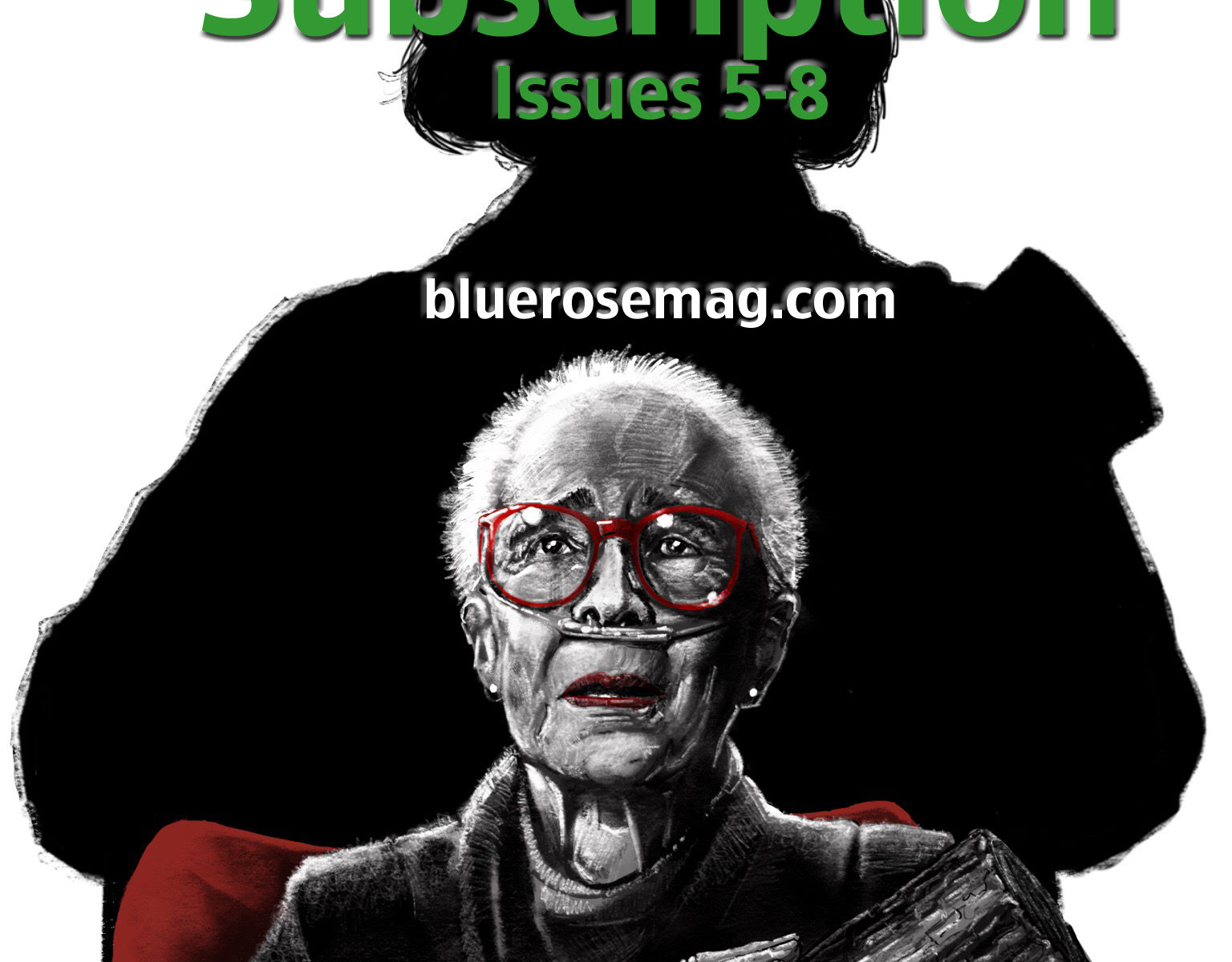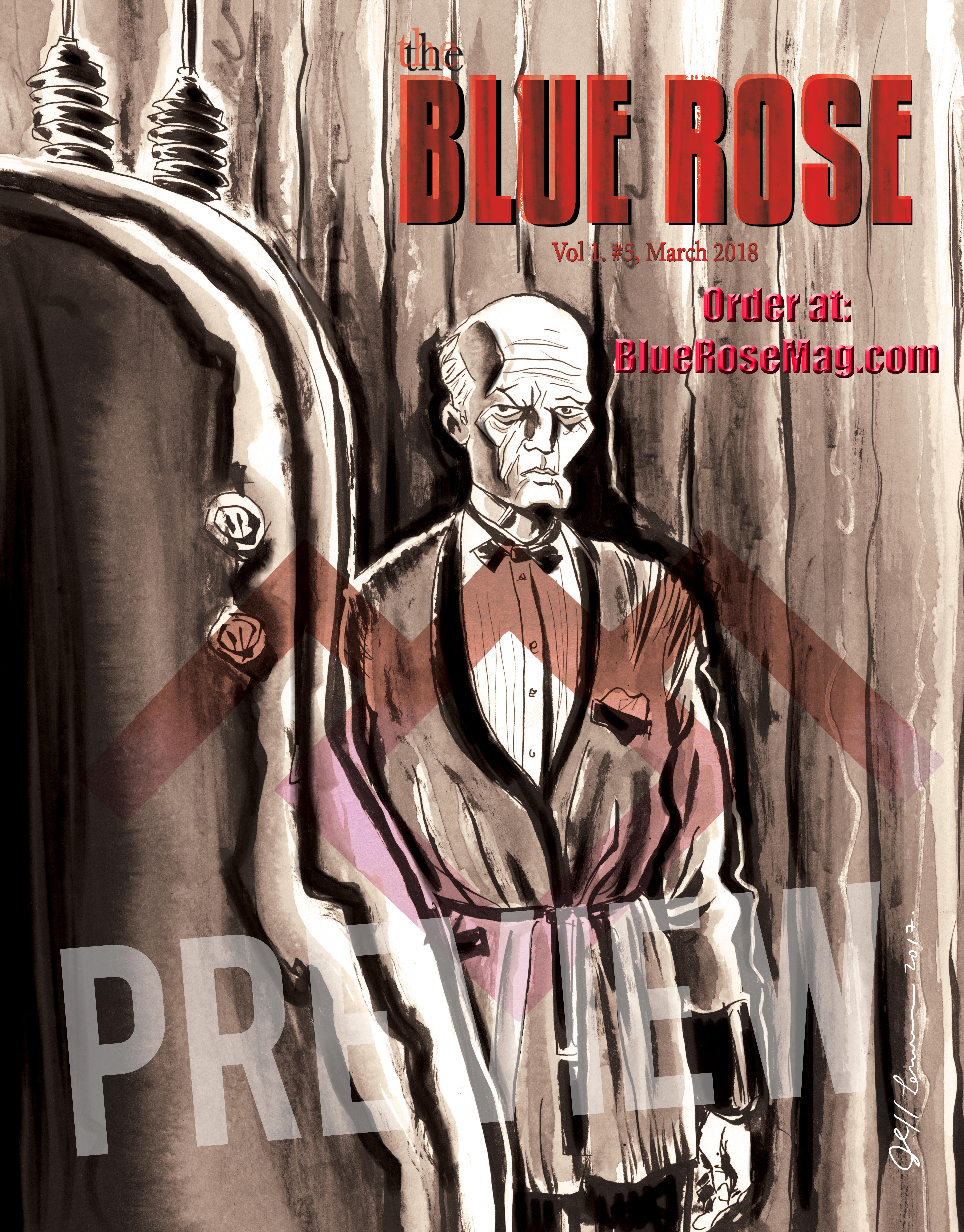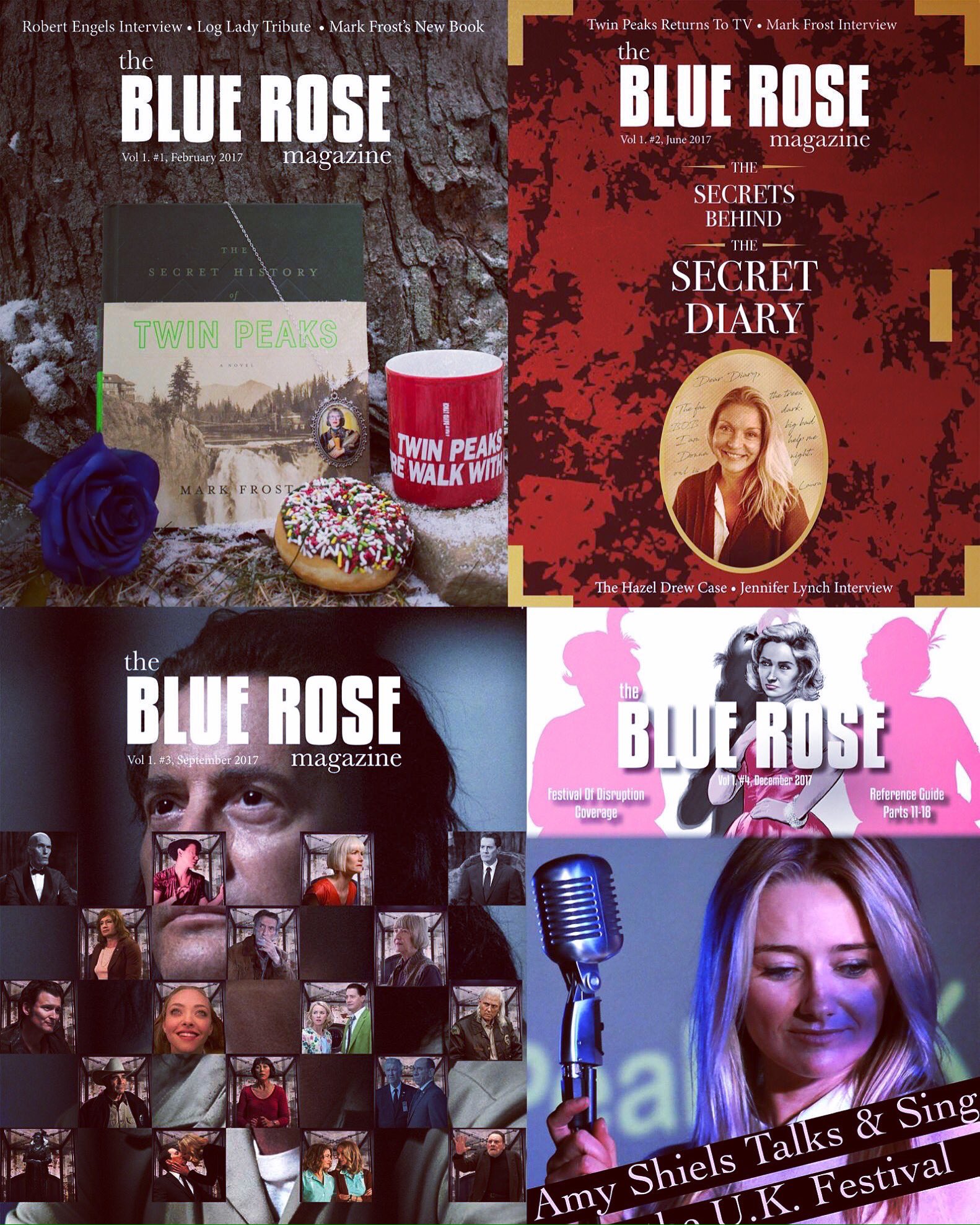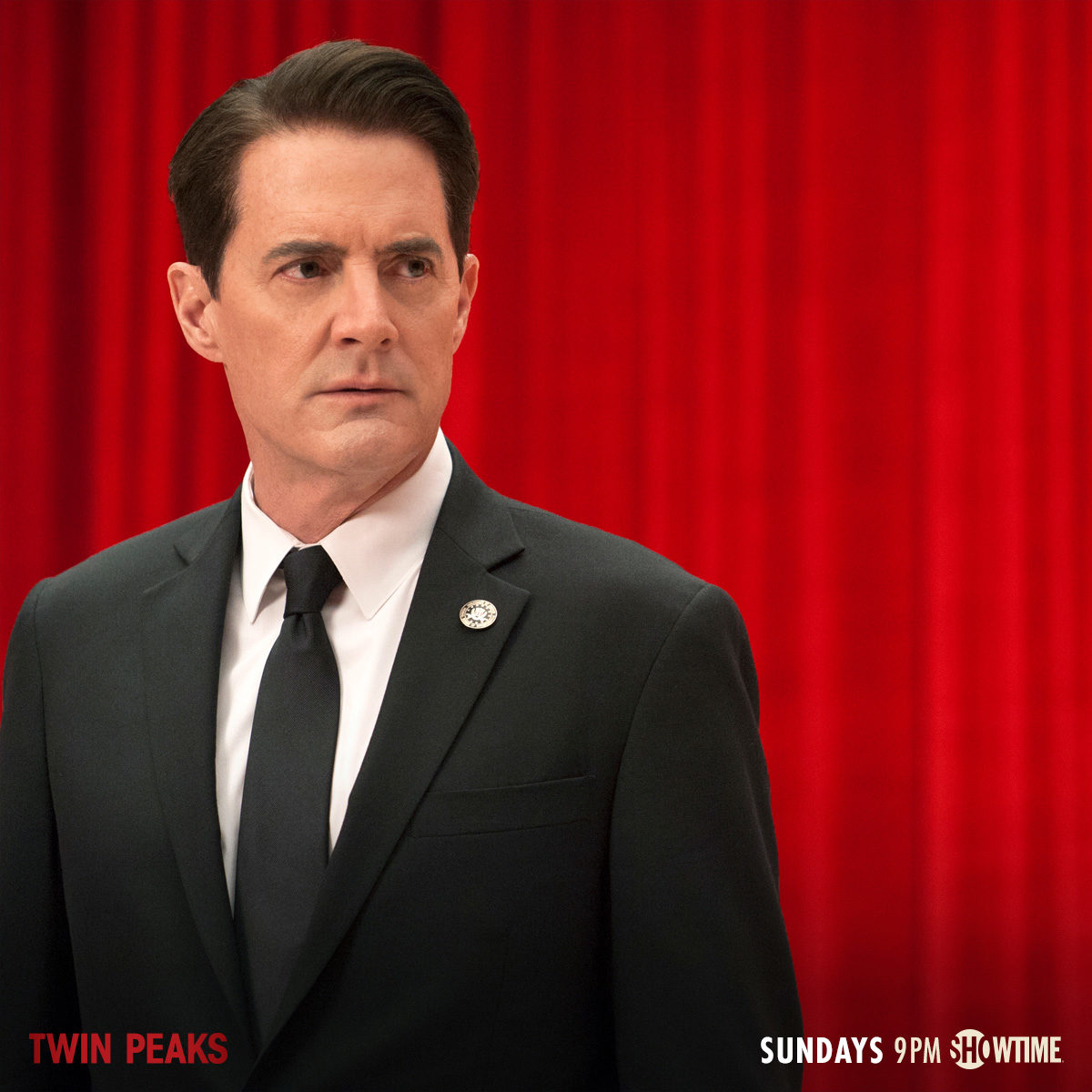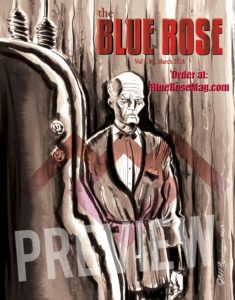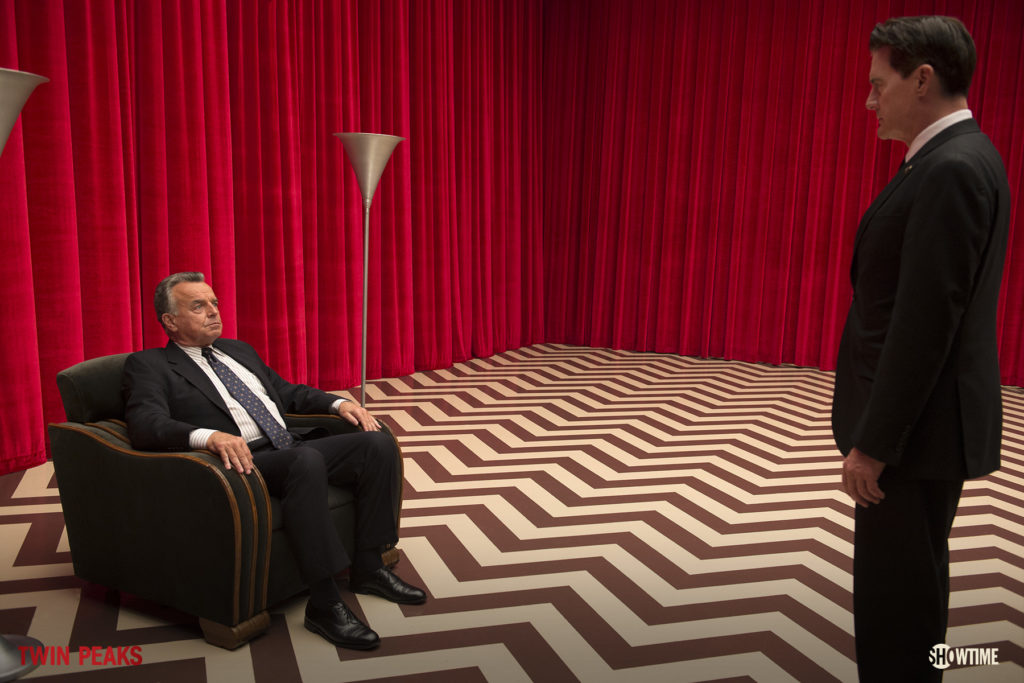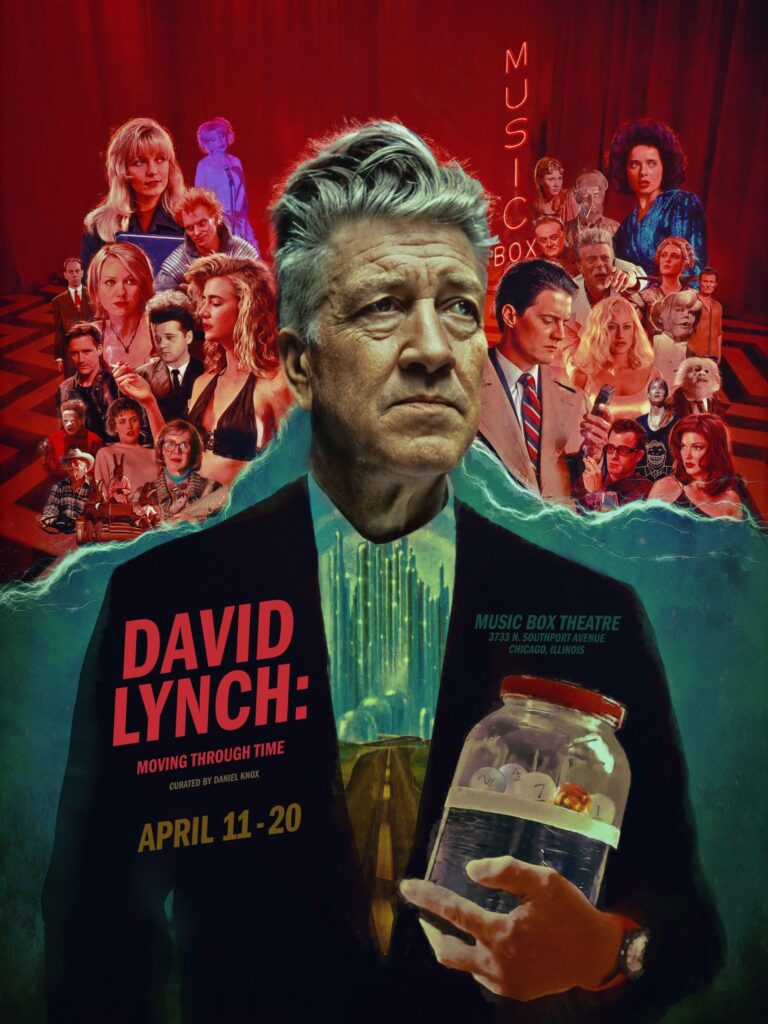
Daniel Knox came up to me at the Mahoning Drive-in back in 2021 and asked me if I was interested in speaking with him about a David Lynch event in Chicago for 2022. We then revived it again in Dallas in 2023. So when 2025 came around, I thought I was prepared for what Daniel Knox does at these Lynch Film Fests. I was not prepared. He out did himself this time. We had a guest every day. We set a world record by showing everything listed on Lynch’s IMDB. We made over 11,000 ticket holders feel wonderful and strange. And they liked it.
Listed below is everything that Daniel scheduled and played. There are web links to Youtube where you can watch the Q&A’s. (You can just go to this playlist and watch them all.) It was the most fun I’ve had at any Lynch event ever. It was a complete success and I sure hope you can join us when we do it again. Thanks, Scott.
(The Playlist on YouTube)
Friday April 11:
4:00pm – The Commercial Work of David Lynch: Presented by Daniel Knox – Digital – 2hr – (no pre-show) – FREE SCREENING
- DK remarks (5m)
- “If youuuuu can believe it…it’s Friday once again” – 15s clip
- 5:03pm – Out Yonder – Teeth – 13m28s
- 5:16pm – DYNAMIC 01 – Member Questions 6 – Out Yonder Theme Song – 1m10s
- 5:17pm – Out Yonder – Chicken – 17m10s
- 5:34pm – Out Yonder: Neighbor Boy Intro – 51s
- 5:35pm – Out Yonder: Neighbor Boy – 9m38s
- 5:45pm – The Darkened Room Intro – 1m23s
- 5:47pm – The Darkened Room – 10m26s
- 5:58pm – Idem Paris – 8m
- 6:06pm – out
- 6:34pm – 16mm – 21m40s
- 6:55pm – The Adventures of Alan R – 1m28s
- 6:56pm – Fictitious Anacin Commercial – 1m5s
- 6:57pm – Absurd Encounter With Fear – 2m11s
- 6:59pm – Eraserhead DVD Easter Egg – 7s
- 7:00pm – opening remarks – 15m w Daniel Knox, Ryan Oestreich and Frederick Elmes (Watch Fred Elmes’s introduction here)
- 7:15pm – Eraserhead – 35mm (1hr29m)
- 8:44pm – Q&A with Fred Elmes by Scott Ryan (Watch the Q&A here)
- 9:15pm out
- 9:25pm – pre-show 20m
- 9:45pm – DK remarks – 3m
- 9:48pm – Scott Ryan introduces Lost Highway (5m) (Watch intro here)
- 9:53pm – Lost Highway – DCP (2hr15m)
- 12:08am – 15m intermission (concession stand still open)
- 12:23 – What Did Jack Do? – 17m
- 12:40am – David Lynch Cooks Quinoa – 20m5s
- 1:00am – The Cowboy And The Frenchman Intro – 1m23s
- 1:01am – The Cowboy And The Frenchman – 25m53s
- 1:26am – out
Saturday April 12:
- 10:40am – pre-show – 20m
- 11:00am – DK remarks – 2m
- 11:02am – The Elephant Man – 4K DCP – (2hr4m)
- 1:04pm – out
- 1:20pm – pre-show – 20m
- 1:40pm – DK remarks – 2m
- 1:42pm – The Straight Story – 35mm – 1hr52m
- 3:34pm – out
- 4:10pm – DK remarks and Scott Ryan Introduces the film. 2m – (no pre-show) (Watch the Scott’s introduction here)
- 4:12pm – Lynch Oz – DCP – (1hr48m)
- 6:00pm – out
- 6:30pm – pre-show – 10m
- 6:40pm – DK remarks – 2m
- 6:42pm – The Wizard Of Oz – 35mm – (1hr42m)
- 8:24pm – out
- 8:40pm – pre-show – 20m – (includes Chris Issak Wicked Game music video – 3m52s)
- 9:00pm – DK remarks – 10m
- 9:10pm – Wild At Heart – DCP – (2hr4m)
- 11:14pm – out + Q&A with Frederick Elmes & Duwayne Dunham by Scott Ryan (Watch the Q&A here)
- 11:34pm – out
- 11:49pm – pre-show – 14m49s
- 12:04am – DK remarks – 3m
- 12:07am – The Hidden – 35mm – (1hr37m)
- 1:45am – out
Sunday April 13:
- 1:47pm – pre-show (20m) – (includes The Story Of A Small Bug 2m33s)
- 2:07pm – The 3 R’s – 1m
- 2:08pm – Dream #7 – 42s
- 2:09pm – The Bug Crawls Intro – 43s
- 2:10pm – The Bug Crawls – 5m
- 2:15pm – DK remarks and Duwayne Dunham & Frederick Elmes introduce Blue Velvet. (Watch this intro here)
- 2:20pm – Blue Velvet 35mm – (2hr)
- 4:20pm – Q&A with Duwayne Dunham & Frederick Elmes by Scott Ryan (Watch this Q&A here)
- 4:50pm – out
- 5:48pm – pre-show – 12m
- 6:00pm – DK remarks + Mark Frost pre-recorded intro (10m total)
- 6:10pm – Storyville – Digital – 1hr53m
- 8:03pm – 15m Intermission
- 8:28pm – Twin Peaks Pilot – 4K disc – (1hr53m) – FREE SCREENING
- 10:10 – Q&A with Duwayne Dunham by Scott Ryan (Watch this Q&A here)
- 10:21pm – Twin Peaks Episode 1 – Blu Ray – (46m) – FREE SCREENING
- 11:07pm – Twin Peaks Episode 2 – Blu Ray – (48m) – FREE SCREENING
- 11:55pm – out
Monday April 14:
- 1:40pm – pre-show – 15m30s (includes Memory Film 4m52s)
- 1:55pm – Pierre & Sonny Jim – 3m31s
- 1:59pm – The Mystery Of The Seeing Hand – 1m32s
- 2:00pm – DK remarks – 3m
- 2:03pm – Meditation Creativity Peace – DVD – (1hr11m) – FREE SCREENING
- 3:14pm – out
- 3:21pm – pre-show – 17m30s
- 3:40pm – DK remarks – with John Thorne & Scott Ryan – 10m (Watch this Introduction here)
- 3:50pm – Mulholland Drive – 35mm (2hr27m)
- 6:17pm – out
- 6:50pm – DK remarks – 10m – (no pre-show)
- 7:00pm – I Know Catherine, The Log Lady – DCP (1hr40m)
- 8:40pm – film ends start Q&A with Richard Green and Charlotte Stewart by Scott Ryan (Watch this Q&A Here)
- 9:00pm – out
- 9:10pm – pre-show – 20m
- 9:30pm – DK remarks – 3m
- 9:33pm – The Elephant Man – DCP – (2hr4m)
- 11:37pm – out
Tuesday April 15:
- 3:30pm – DK remarks – 5m – (no pre-show)
- 3:35pm – I Don’t Know Jack – DCP – (1hr31m)
- 5:06pm – Q&A with Richard Green by Scott Ryan
- 5:31pm – out (HARD OUT)
- 6:03pm – pre-show – 27m
- 6:30pm – DK remarks – 3m
- 6:33pm – Eraserhead – 35mm (1hr29m)
- 7:56pm – Q&A with Charlotte Stewart by Scott Ryan (Watch this Q&A here)
- 8:40pm – out
- 9:10pm – pre-show – 20m
- 9:30pm – DK remarks – 3m
- 9:33pm – Dune – 35mm – (2hr20m)
- 11:53pm – Lamp Intro – 2m16s
- 11:55pm – Lamp – 30m42s
- 12:26am – Fire aka Pozar – 10m31s
- 12:37am – Memory Film – 4m
- 12:41am – David Does More Work – 14m5s
- 12:55am – Intervalometer Experiment Intro w all 3 – 13m46s
- 1:09am – out
Wednesday April 16:
- 3:45pm – DK remarks (3m)
- 3:48pm – Blue Velvet Revisited – DCP – (1hr26m) – (no pre-show)
- 5:32pm – pre-show (20m)
- 5:52pm – The 3 R’s – 1m
- 5:53pm – Dream #7 – 42s
- 5:54pm – The Bug Crawls Intro – 43s
- 5:55pm – The Bug Crawls – 5m
- 6:00pm – DK remarks (5m)
- 6:05pm – Blue Velvet – 35mm – (2hr)
- 8:05pm – out
- 8:45pm – DK remarks with Geroge Griffith – 5m – (no pre-show)
- 8:50pm – Sailing With Bushnell Keeler – 2m54
- 8:53pm – From The Head – 35mm – (1hr35m)
- 10:28pm – films ends + Q&A with George Griffith by Scott Ryan (Watch this Q&A Here)
- 11:00 pm – Q&A over
- 15m intermission
- 11:15pm – DK remarks – 5m
- 11:20pm – Hotel Room Ep1 – 29m
- 11:49pm – Hotel Room Ep3 – 48m
- 12:37am – out
Thursday April 17: TWIN PEAKS NIGHT
- 1:40pm – pre-show – 20m
- 2:00pm – DK remarks – 3m
- 2:03pm – Red Rock West – 35mm – (1hr38m)
- 3:41pm – out
- 3:53pm – pre-show – 20m
- 4:15pm – DK remarks – 2m
- 4:17pm – My Last Martini – DCP – (14m)
- 4:31pm – Q&A with Wendy Robie & Rob Christopher with Scott Ryan – (17m) (Watch this Q&A Here)
- 4:48pm – Wild At Heart – DCP – (2hr4m)
- 6:52pm – out
- 6:00pm –
- Pie provided by Hoosier Mama
- Coffee provided by The Brewed
- Mark Spreyer from the Stillmann Nature Center arrives with a real Great Horned Owl to show guests in the inner lobby.
7:00pm – pre-show – (30m)
- Includes:
- Twin Peaks Festival Greeting – 4m21s
- David Lynch’s Comic Con Message – 2m25s
- Laura Palmer (2002) – 4m6s
- 7:30pm – DK remarks – with Scott Ryan – (10m) (Watch this Introduction here)
- 7:40pm – Twin Peaks: Fire Walk With Me – DCP – (2hr14m)
- 9:54pm – 15m Intermission
- 10:09pm – Twin Peaks The Return: Episode 8 – 4K disc – (58m) – George Griffith introducing
- 11:07pm – World Of Blue – (1hr19m) – UNANNOUNCED
- 12:16am – Lynch’s Introduction to The Missing Pieces – 2m – UNANNOUNCED
- 12:18am – Missing Pieces – DCP – (1hr32m) – UNANNOUNCED
- 2:05am – out
Friday April 18:
- 12:37pm – “If youuuuu can believe it…it’s Friday once again” – 15s clip
- 12:37pm – The Spider And The Bee – 12m5s
- 12:49pm – The Story Of A Small Bug – 2m33s
- 12:51pm – How Was Your Day Honey? – 2m18s
- 12:54pm – Bees aka Ball Of Bees #1 – 6m
- 1:00pm – DK remarks – 2m
- 1:02pm – David Lynch: The Art Life – DCP – (1hr28m)
- 2:32pm – out
- 3:00pm – DK remarks and Mary Sweeney introduces Sunset BLVD. – 5m – (no pre-show) (Watch this introduction here)
- 3:05pm – Sunset Blvd – 35mm – (1hr55m)
- 5:00pm – out
- 5:27pm – pre-show – 17m30s
- 5:45pm – DK remarks with Mary Sweeney introducing Mulholland Drive. (Watch the intro here) – 5m
- 5:50pm – Mulholland Drive – 35mm (2hr27m)
- 8:17pm – Q&A with Mary Sweeney & Scott Ryan (Watch this Q&A Here)
- 8:55pm – out
- 11:32pm – pre-show (20m)
- 11:52pm – The 3 R’s – 1m
- 11:53pm – Dream #7 – 42s
- 11:54pm – The Bug Crawls Intro – 43s
- 11:54pm – The Bug Crawls – 5m
- 11:59pm – DK remarks (5m)
- 12:04am – Blue Velvet 35mm – (2hr)
- 2:04am – Blue Velvet Deleted Scenes – Digital – (53m)
- 2:57am – out
Saturday April 19:
- These shorts played first without sound:
11:15am – Head With Hammer – 15s11:15am – Factory Mask – 46s11:16am – Coyote – 4m14s11:20am – The Pig Walks – 1m58s11:22am – Waiting For Mr. Lynch – LEFFEST (2018) – 1m28s11:26am – Disc Of Sorrow – 4m11s- 11:30am – DK remarks – 3m
- 11:33am – RECORDED ZOOM WITH NANCYE FERGUSON & SCOTT RYAN (10m) (Coming soon to Blue Rose YouTube Channel the full hour interview)
- 11:43am – On The Air – Laserdisc
- 11:43am – On The Air Ep.1 – 25m
- 12:08pm – On The Air Ep.7 – 23m
- 12:31pm – Industrial Symphony Interviews – 11m – UNANNOUNCED
- 12:42pm – Industrial Symphony No. 1 – 50m – UNANNOUNCED
- 1:31pm – out
- 1:49pm – DOES THAT HURT YOU – DVD – (26m) – whole film as pre-show
- 2:15pm – DK remarks – 5m
- 2:20pm – DUMBLAND – DVD (36m)
- 2:56pm – The Amputee Slate Test 1 – 10s
- 2:56pm – The Amputee Slate Test 2 – 31s
- 2:56pm – The Short Films Of David Lynch DVD Easter Egg – 14s
- 2:57pm – The Short Films Of David Lynch – DCP – (55m)
- 3:52pm – out
- These shorts re-played from earlier with sound:
- Head With Hammer – 15s
- Factory Mask – 46s
- Coyote – 4m14s
- The Pig Walks – 1m58s
- Waiting For Mr. Lynch – LEFFEST (2018) – 1m28s
- Disc Of Sorrow – 4m11
- 4:30pm – DK remarks – 3m
- 4:33pm – River’s Edge – 35mm – (1hr39m) – (no pre-show)
- 6:12pm – out
- 9:00pm – Music In The Air: Exploring The Musical Worlds Of David Lynch – (no pre-show) (Watch this presentation Here)
- 9:03pm – Scott Ryan performs and takes questions from the audience about his book Always Music In The Air – 15m
- 9:18pm – Daniel Knox performs – 15m
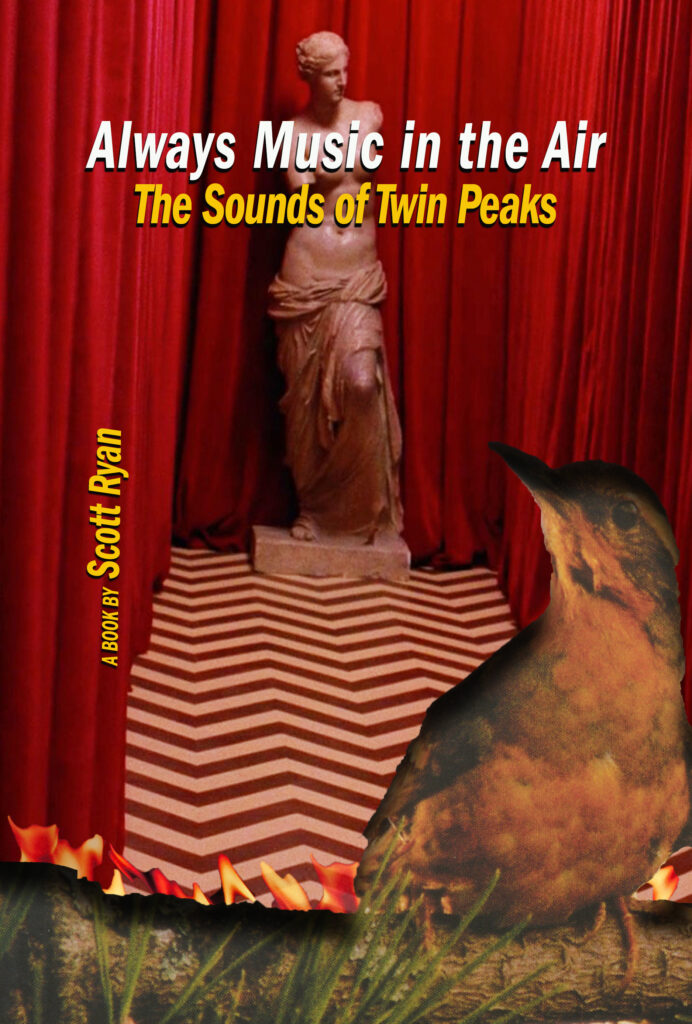
(Watch this presentation Here)
9:33pm – David Lynch’s Music Videos & More (1hr43m)
- Angelo Badalamenti on writing Laura Palmer’s Theme – 4m
- Julee Cruise Falling Music Video – 4m20s
- Alicia Witt plays Hayward Boogie – 1m43s
- Blue Bob Interview – 4m4s
- Blue Bob: Egg – 18s
- Blue Bob – Thank You Judge video – 5m53s
- Thought Gang: A Real Indication – 5m35s
- Duran Duran: Unstaged Trailer – 59s
- David Lynch Talks Music At Amoeba Hollywood – 1m59s
- X Japan Longing – 4m58s
- Julee Cruise – Rockin’ Back Inside My Heart on BBC2 The Late Show 1989 – 6m9s
- Crazy Clown Time in studio footage – 1m24s
- Crazy Clown Time Video – 7m3s
- I Touch A Red Button – Incubus – 5m40s
- Shot In The Back Of The Head – Moby – 3m15s
- David Lynch – Making The Big Dream – 9m39s
- Came Back Haunted – Nin – 4m15s
- Fire Is Coming – Flying Lotus – 3m27s
- Some Yoyo Stuff clip – 38s
- David Lynch – Don’t Look At Me – clip – 3m43s
- Ariana Delawari – Lion Of Panjshir music video – 5m52s
- I Am The Shaman – Donovan – 4m56s
- Gimme Some A That – Donovan – 3m4s
Approx – 11:16pm – out
11:30pm – pre-show – 30m
- Includes:
- Hollyshorts – 3m57s
- Laura Palmer (2002) – 4m6s
- 11:59am – DK remarks – Scott Ryan Introduction 3m
- 12:02am – Twin Peaks: Fire Walk With Me – DCP – (2hr14m)
- 2:16am – out
- 11:00am – pre-show 15m
- 11:15am – DK remarks with Mary Sweeney – 5m
Sunday April 20 (Easter): INLAND EMPIRE DAY
- 11:20am – The Straight Story – 35mm – 1hr52m
- 1:12pm – out + Q&A with Mary Sweeney and Scott Ryan (Watch this Q&A Here)
- 1:42 out
- 2:10pm – pre-show (20m)
- 2:30pm – DK remarks with Scott Ryan Introduction and Mary Sweeney Introduction – (Watch this introduction here) 5m
- 2:35pm – Lost Highway – DCP – 2hr15m
- 4:50pm – out
- 5:02pm – Dead Mouse With Ants – 5m6s
- 5:07pm – Industrial Soundscape Intro – 2m42s
- 5:10pm – Industrial Soundscape 11m
- 5:21pm – Boat Intro – 56s
- 5:22pm – Boat 8m
- 5:22pm – David Lynch’s Hand Drawn Inland Empire 4K Remaster Flow Chart Appears On Screen
- 5:30pm – DK & Scott Ryan‘s good bye remarks – (Watch the final comments here) 5m
- 5:33pm – David Lynch Tribute video by Andrew Batzel – 1m13s
- 5:33pm – Nate And Matt Meet David Lynch And A Cow – 2m
- 5:36pm – Inland Empire DCP – 3hr
- 8:36pm – out
- 9:02pm – Ant Head – 13m10s
- 9:15pm – DK final remarks (Watch Daniel’s Final Remarks here) 5m
- 9:20pm – Rabbits, Lynch (One) & More Things That Happened…
- 9:20pm – Rabbits 1 – 15m
- 9:35pm – Rabbits 2 -13m
- 9:48pm – Rabbits Starring Suzie – 8m
- 9:56pm – Rabbits Starring Jack – 7m
- 10:03pm – Lynch One – DIGITAL – 1hr24m
- 11:27pm – Lynch Two – 30m
- 11:58pm – Room To Dream – 6m
- 1:04am – More Things That Happened – 1hr15m
- 1:19am – Blue Green – 3m1s
- 1:22am – Scissors aka Absurda – 2m59s
- 1:25am – Ballerina 12m
- 1:36am – Final Image: David Lynch’s Empty Chair (curtain closes) – 30s
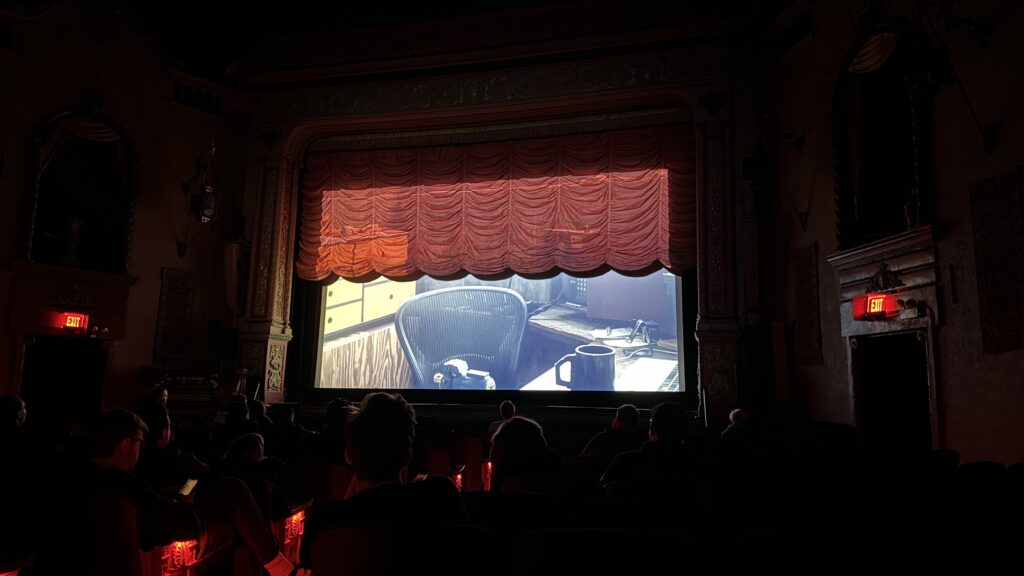
1:37am – out
END. Watch the final video that has a photo montage of all the fun.
– – – – – – – – – – – – – – – – – – – – –
You can watch all the introductions and Q&A’s at this playlist on the Blue Rose Youtube channel.
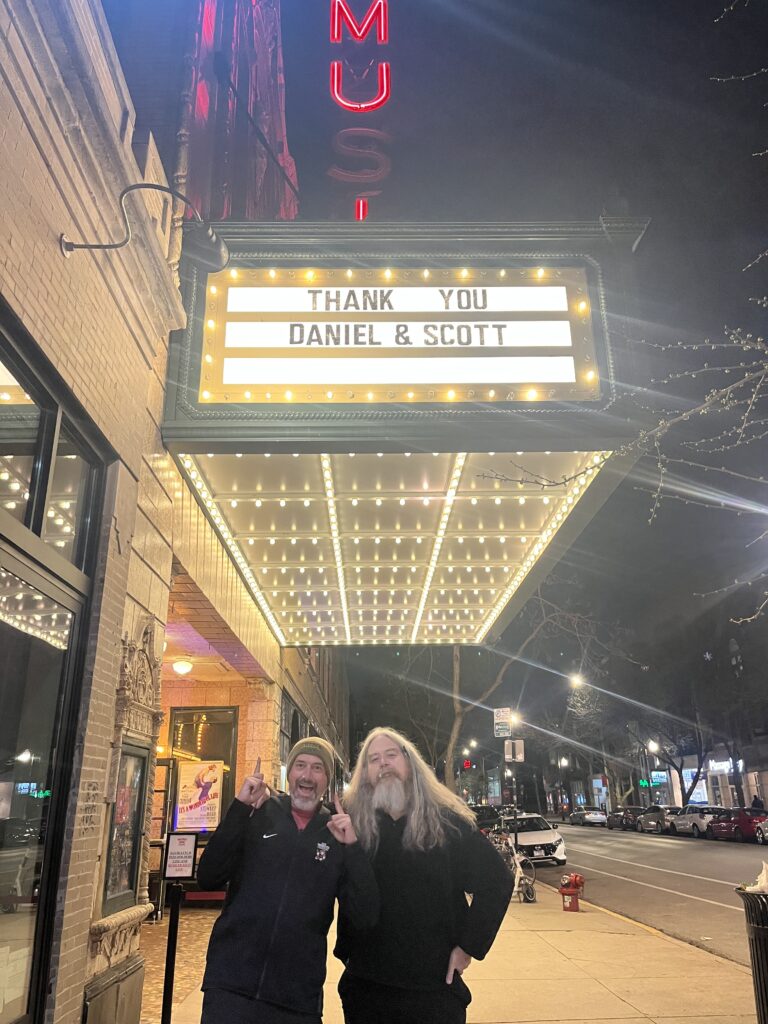
Daniel Knox
mgmt/booking: contact@danielknox.com
website: danielknox.com
ig/fb/twitter: @danielknoxmusic
“His is a majestic body of work that demands repeated listening. 9/10”
– Loud and Quiet
“A journey of sublime disaster and misfortune”
– The Line of Best Fit
“Knox is a masterly narrator bringing a refreshing directness to his filmic tales of nocturnal wanderings, lonely roads, and mysterious figures in parked cars.”
– Uncut
“Won’t You Take Me With You is Knox in typically epic form, a suspenseful fusion of country-folk ballads and Twin Peaks cabaret.”
– Mojo
“Chasescene confirms Knox as a master storyteller, and is a record to settle into on dark nights”
– The Guardian
With a baritone as dynamic as it is indestructible, Daniel Knox narrates compositions with a perverse and sometimes comical wit, guiding the listener through sprawling worlds that exist just out of frame.
His work has inspired a diverse cast of admirers and collaborators that lie inside and outside his realm of alternative Americana, such as Jarvis Cocker, Thor Harris (Swans, Freakwater), Ralph Carney (Tom Waits, The B-52’s), Nina Nastasia, David Lynch, and The Handsome Family, with recent performances including the likes of Rufus Wainwright, Andrew Bird, Rasputina, and Swans.
Daniel Knox’s most recent release Won’t You Take Me With You comes on the heels of his mini-album of original material, I Had A Wonderful Time, and it’s predecessor – his critically acclaimed grand holistic album Chasescene, which confirmed his position as both a “rare talent” (Loud And Quiet) and as a master storyteller (The Observer).
Won’t You Take Me With You is Knox at his most accessible and assured – the unconventional beauty of his piano style fitting perfectly with long dream-like stretches of synthesizers while Knox’s rich baritone buries deeper within the music. It exists as a line in the sand and a turning point, a perfect entry point into looking back on a fascinating career while at the same time the moment to strap in for whatever is to come.
In 2024 Knox co-wrote and performed the song I Saw You with composer Joseph Bishara (Insidious; The Conjuring) for the Sony Pictures film Tarot.
Daniel Knox lives and works in Porto, Portugal.
Order the Final issue of the Blue Rose Magazine or one of our books at the Blue Rose Store.

